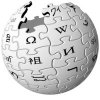Our MapShapes have been very popular since we introduced them in 2008. Now that we’ve posted two articles on how to use Visimation MapShapes to create maps and visualize data, I just want to summarize by responding to 5 most frequently asked questions we’ve received about MapShapes. I hope this information helps you to determine if MapShapes will be valuable to you in your work:
-
What versions of MapShapes are available and what versions of Visio are supported?
 We currently offer MapShapes for US states and counties in 10 sets. There are 9 sets corresponding to US Census Bureau regions plus a complete set of the entire United States. We also offer MapShapes for China and its provinces. These will work with all versions of Visio 2002 and later although the data linking features described in other VisioZone articles requre Visio 2007 Professional.
We currently offer MapShapes for US states and counties in 10 sets. There are 9 sets corresponding to US Census Bureau regions plus a complete set of the entire United States. We also offer MapShapes for China and its provinces. These will work with all versions of Visio 2002 and later although the data linking features described in other VisioZone articles requre Visio 2007 Professional.
 Can these maps be used with programs other than Visio?
Can these maps be used with programs other than Visio?
Yes. MapShapes are uniquely packaged to include vector images in Enhanced Metafile (.emf) format for easy insertion into applications such as MS PowerPoint, MS Word, and other programs. They will remain crisp and clear when resized at their original aspect ratio (height to width) because they are vector graphics and not bit mapped images that become pixelated and fuzzy when enlarged.
- How can I use MapShapes to present business information?
You can add color and text to MapShapes manually. With Visio 2007 Professional, you can open an external data file in Excel, Access, SQL Server, and various other structured data sets to link the records to states and counties. Our VisioZone article shows you exactly how to do that with US Census data.
- How accurate are Mapshapes?
Very accurate to within 1/800th of an inch. We made a design and quality decision to convert GIS (Geographic Information System) data, in this case ESRI shape files, into Visio geometry and we developed software tools to do this. We weren’t satisfied with the accuracy of map art collections that we could have more easily converted from other graphic formats… the boundaries did not match up well enough to meet our standards.
 How can I find out more about the geography shown in a MapShape?
How can I find out more about the geography shown in a MapShape?
Each MapShape contains a ShapeLink™ hyperlink to the corresponding Wikipedia entry for that location. Simply right click on the MapShape and select “More Information”. Of course, the Wikipedia page will also provide many links to additional information. MapShapes are an easy jumping off point to help you find what you need.
There’s a lot more information about MapShapes on the MapShapes product pages. Select either US or China to browse through the available sets and to find out about pricing.
| Version | States Included |
| East North Central | Illinois, Indiana, Michigan, Ohio, Wisconsin |
| East South Central | Alabama, Kentucky, Mississippi, Tennessee |
| Middle Atlantic | New Jersey, New York, Pennsylvania |
| Mountain | Arizona, Colorado, Idaho, Montana, Nevada, New Mexico, Wyoming, Utah |
| New England | Connecticut, Maine, Massachusetts, New Hampshire, Rhode Island, Vermont |
| Pacific | Alaska, California, Hawaii, Oregon, Washington |
| South Atlantic | Delaware, DC, Florida, Georgia, Maryland, North Carolina, South Carolina, Virginia, West Virginia |
| West North Central | Iowa, Kansas, Minnesota, Missouri, Nebraska, North Dakota, South Dakota |
| West South Central | Arkansas, Louisiana, Oklahoma, Texas |
You can also download a free basic stencil of the United States. It includes outlines for all 50 states and the entire US (for Visio only – no .emf vector files for direct insertion in MS Office products such as Word and PowerPoint). These shapes glue together at connection points and show only the state boundaries.
© 2009 – 2010, Visimation. All rights reserved.
Leave a Reply